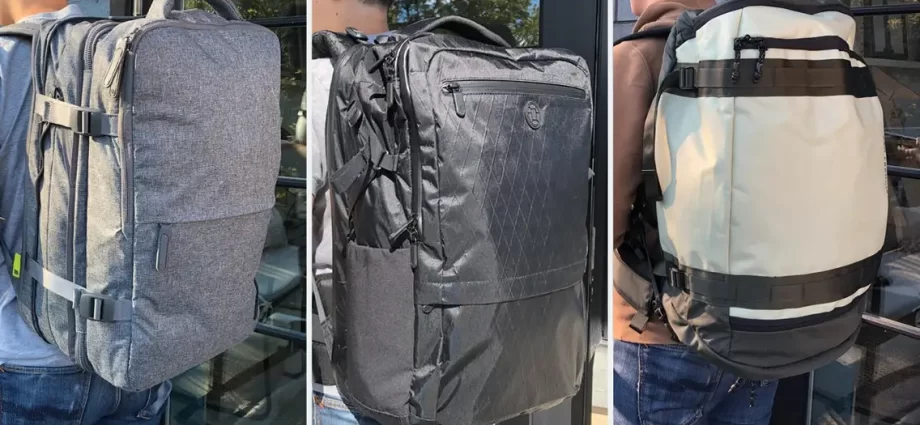Travel backpacks make navigating any terrain much simpler and allow easy access to all of your gear. Plus, they’re more durable than roller bags and can carry more gear than suitcases!
Protect against theft with zippers with locking features and add an anti-theft padded hip belt to distribute some of the burden off of your shoulders.
Size
Size matters when it comes to travel backpacks because it affects whether or not you can carry enough gear for your journey. Backpacks are often measured in liters; their capacity will usually be specified on their packaging. Selecting an appropriate size could save money on airline fees and time spent waiting at baggage claim – plus reduce any potential hassles along the way!
Bags smaller than 30 liters won’t hold enough gear for extended trips, while anything larger would be difficult to carry. An optimal bag size should range between 30-40 liters.
Find a backpack with durable fabrics and high-quality zippers; YKK zippers are a must for travel backpacks – simply look out for their logo on the inside of the bag! Plus, ensure it fits comfortably around your frame.
Comfort
Comfort is of utmost importance when carrying your travel backpack for extended periods, whether running to your gate or navigating busy streets, so making sure the shoulder straps are padded and designed properly to take some of the weight off of your shoulders is also key. Cinch tight to provide extra support around your waist where your hips are strongest.
Make sure your bag features lockable zippers to avoid potential pickpockets and thieves opportunistically targeting touristy areas with higher crime rates. Locking zippers may help protect against unwary thieves looking to make quick gains with pickpocketing attempts. This is particularly crucial if your travel plans take you into more tourist-heavy destinations with higher crime rates.
Most travel backpacks feature an internal frame to align the load’s center of gravity closer to your body and prevent it from shifting while wearing. Laminated fabrics like X-Pac offer waterproofness without depending on DWR coatings that may wear off over time.
Style
The best travel backpacks use fabrics, hardware, and details that help extend their lifespan – including thick padding along the interior to support structure, durable YKK zippers designed to stand up against wear-and-tear, and water-repellent coatings on their exterior surfaces.
Travel backpacks should include a laptop sleeve as a minimum requirement, with additional compartments dedicated to electronics and tablets. You should also search for packs equipped with compression straps so you can reduce the size of your packed items by tightening down on clothes and accessories with internal compression straps.
Matador may be a lesser-known brand than Cotopaxi and Osprey, but their innovative thinking has them growing quickly. Their SEG45 Travel Backpack for instance features a segmented design that unzips to reveal independent compartments perfect for organizing gear according to activity level or day of travel.
Material
Selecting the appropriate material is key when purchasing travel backpacks. The top models use a mix of fabrics that ensure strength and flexibility. Polyester and nylon are popular choices because they’re lightweight, waterproof, durable, and often provide UV resistance against prolonged sun exposure.
Nylon fabric is often chosen for backpacks due to its durability and cost effectiveness. Available in multiple thicknesses and colors to meet different needs, nylon can also be blended with Ripstop or Cordura threads to increase durability further.
Some backpacks are constructed using sailcloth, an ultra-high molecular weight polyethylene material used for sailboat sails. Other brands may use high-tech fabrics like Dyneema or Cuben Fiber designed specifically to be lightweight yet strong – perfect for racing yachts!
Price
A quality travel backpack will be made from quality materials such as waterproof fabrics and hardware from industry leader YKK zippers, with durable material being long-lived; seams should also be sewn efficiently so as to avoid stress points which could tear the fabric.
Most travelers do not require fully waterproof bags; however, if you plan to travel in areas with rain or will use your bag on public transport such as night buses or trains in dense urban environments where theft is more prevalent, investing in one with water-resistant materials could be worth your while. To maximize carry-on dimensions while remaining within carry-on weight limits look for one with multiple pockets and organization features but avoid going overboard as too many compartments could prove confusing at security checkpoints.

